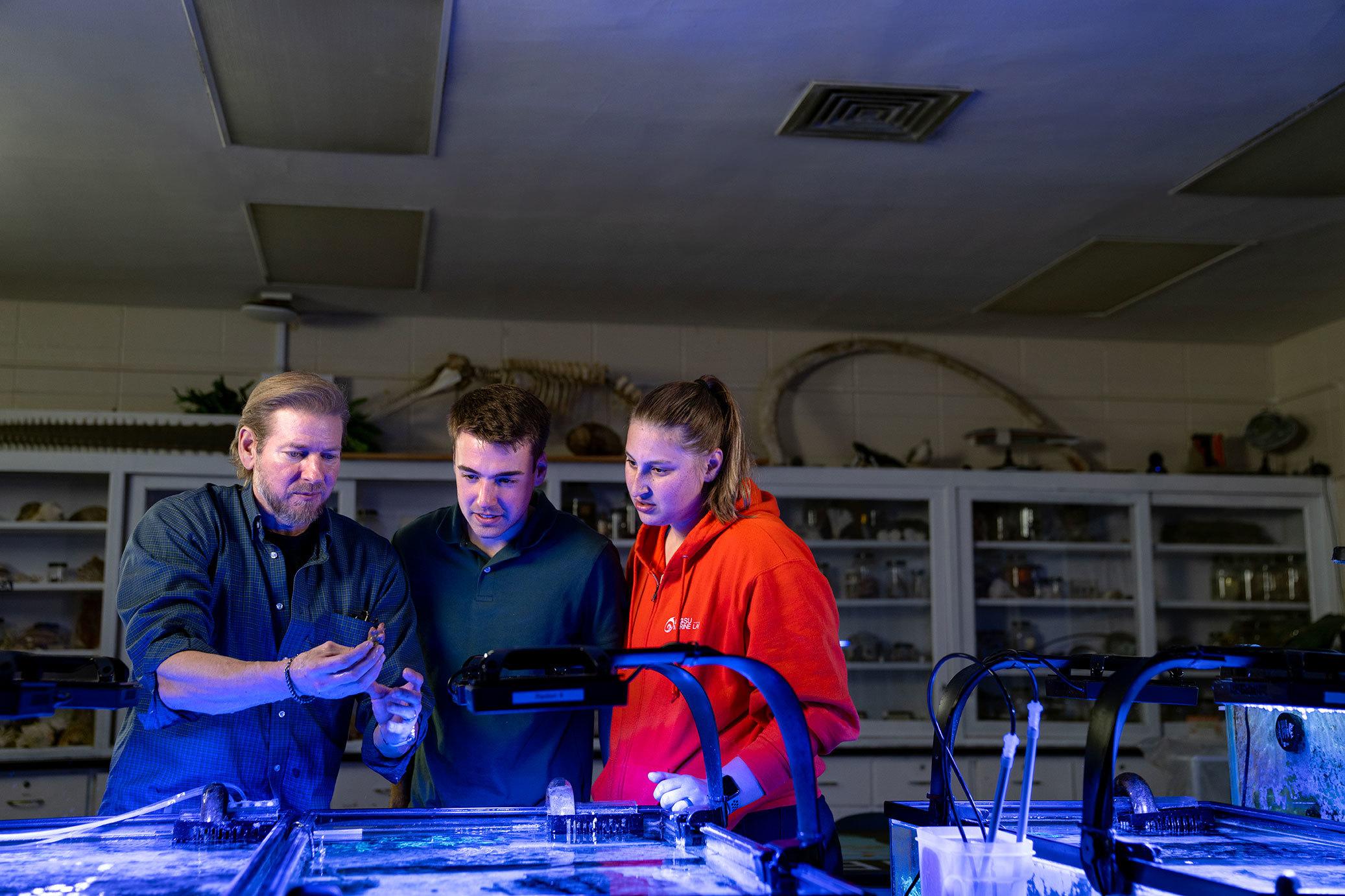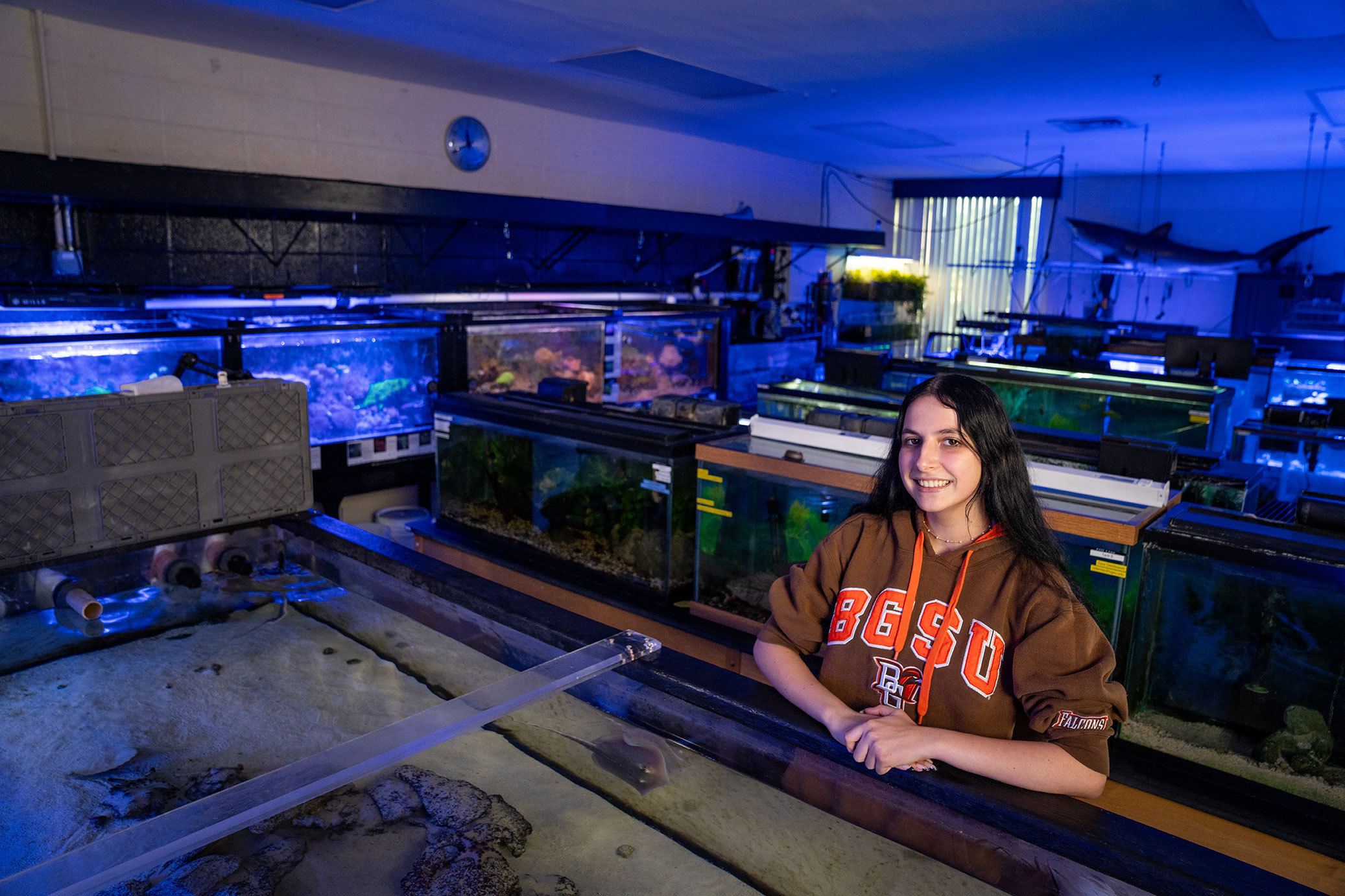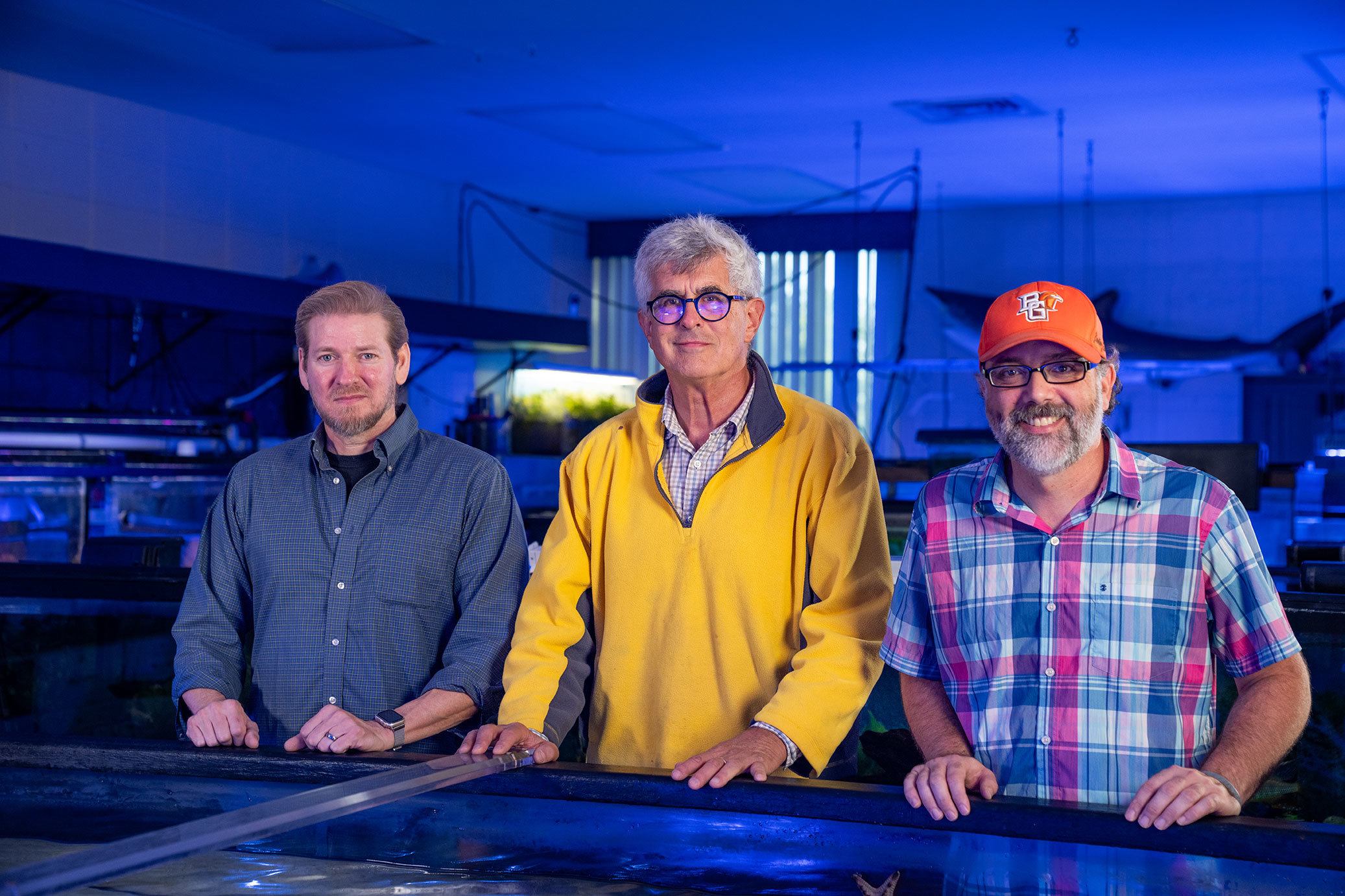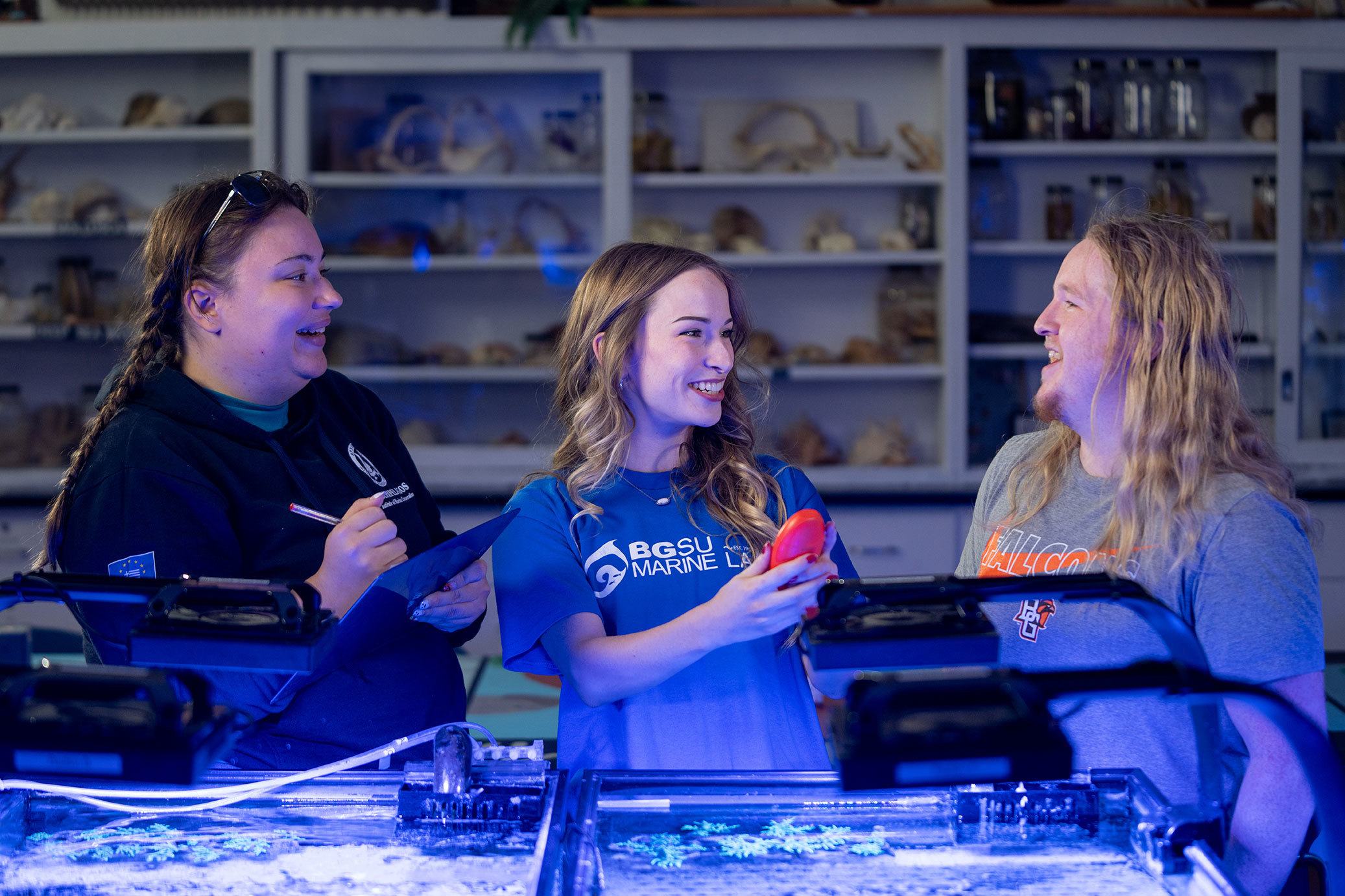
Sea Suite: BGSU Marine Lab offers students all-encompassing experience to study marine life
Estimated Reading Time:
The extensive holdings at the Marine Lab, which dates to the 1960s, draws thousands of visitors every year
For students at Bowling Green State University, marine and aquatic biology isn’t just a specialization — it’s a comprehensive experience.
The Marine Laboratory, located inside the Life Science Building on the University’s campus, is the bustling epicenter for the program, and for 200-plus students, the unmistakable scent of saltwater smells like home.
The lab contains more than 66 genera of marine life, ranging from coral and starfish to stingrays and sharks, and houses more than 3,000 gallons of seawater. The facility is unmatched for an inland school in the U.S., drawing more than 1,000 visitors annually and students from far-ranging places who come to BGSU to learn in and from the Marine Lab.
“There are very few schools, especially in the Midwest, who have what we do,” said Dr. Matthew Partin ’95, ’98, ’08, the Marine Lab coordinator and a teaching professor in the Biological Sciences Department at BGSU.
“We’ve had students from all over the country – California, New York, everywhere – come to BGSU because of our lab.”
The facilities at BGSU allow students studying marine biology to gain valuable hands-on experience just steps away from some of their classes.
Added to field experiences — whether nearby in the Lake Erie watershed or on the Gulf Coast — students build their expertise within their field as undergraduates, often opening the door for internships, graduate school offers and job opportunities that jumpstart their next steps.
“Because they have handled fish and other organisms when they’re at BGSU, they can tout that experience to any other organization that needs someone with field and laboratory experiences,” said Dr. Jeffrey Miner, a BGSU professor who specializes in aquatic ecology.
“It’s a progressive case of getting experiences, and it’s not just getting experiences in the classroom. We want to provide experiences in the lab and in the field so our graduates have that initial hands-on exposure to confidently move on with their careers.”
Student-centered
When visitors see the Marine Lab for the first time, they often see opportunity.
Prospective students who know they are interested in science step into the room — full of complete aquatic ecosystems — and experience an environment designed to support their academic journey to becoming a scientist.
The uniqueness of BGSU’s lab naturally draws students from far and wide.
“Before I started looking at schools, I actually had no idea that BGSU had a marine lab, but the more I looked into it and took a campus tour, it all clicked,” said BGSU student Killian Cannon, who is now the head coordinator of the Marine Lab.
“I’ve given people tours from everywhere. Earlier this semester, we had someone come from Hawaii because they knew about BGSU specifically because of the Marine Lab.”
Originally started in 1963 by the late Dr. Cindy Stong, the space has been a second home to generations of marine biology students.
Stong gradually began bringing back animals from field trips and keeping them in tanks, allowing students to learn to care for them as they would in many major-related careers.
Over time, the lab grew to become one of the most unique scientific environments anywhere in academia — and students flock to be part of it.
“When I saw everything here, I was like, ‘OK, this is really cool, how do I get involved?’” said BGSU student Mars Keith, the outreach coordinator for the Marine Lab. “I wanted to learn everything I possibly could.”
More than just a place to grow academically and professionally, the lab frequently becomes a place to explore a passion and engage with other like-minded students and faculty.
“I was the kid who begged to go to the zoo or the aquarium, and even in dentist’s or doctor’s offices, I would spend the whole time staring at the aquarium,” Keith said. “I always knew I wanted to do something with animals, and fish and aquatics was something I knew I enjoyed.
“I really enjoy the hands-on experience this lab offers, and knowing the history behind it was a big draw for me.”
More than anything, what the lab offers is experience.
During their time at BGSU, undergraduate students can go from novices to evolving experts with the help of faculty and their fellow students as they learn how to do everything that it takes to keep aquaria.
“Our main goal is to help people learn about aquarium husbandry and get people experience with doing research, doing water tests, setting up tanks and getting them connected to other people in these careers,” Cannon said. “The Marine Lab here allows you to get a ton of experience with anything aquatic.”

Booming program
Thirty years ago, Partin was among a select group of students who saw a world of possibilities close to home.
Already highly interested in aquatic life, Partin – who was named a Distinguished Teaching Professor by the University in 2024 – changed his major and began working in the lab when he saw its extensive collection.
“I was spending a lot of time scuba diving and I was building these big, elaborate coral reef aquariums. I had a pet octopus. I worked at a pet store where I oversaw all their corals,” Partin said. “I was like, ‘What am I doing? This is what I really want to do.’ It just so happened that BGSU had a marine lab where I could start learning.”
In the years that have followed, the marine biology program has become one of the most popular scientific fields at BGSU.
Partin was one of about 20 students in the marine biology program during his undergraduate days, but the program steadily grew to more than 10 times that. BGSU has held steady at 200-plus students in the program for the past decade as more people seek out the University’s expertise in marine and aquatic biology.
Further, the dedicated research space available for students was recently expanded to nearly double its original size.
Early in their academic careers at BGSU, marine biology students have the chance to volunteer for positions in the lab and begin exploring all the ways to use the degree, such as being a researcher, working for a zoo or aquarium, a conservation group or a government agency like U.S. Fish and Wildlife.
“When students first come to BGSU and take Biology 2000 with me, we explore some career options, talk about how to build a resume, how to find internships and whether to consider graduate school – really, all the possible things you can do with a degree in marine biology,” Partin said.
Partin and associate teaching professor Dr. Kevin Neves keep a long and growing list of BGSU alumni working in marine biology fields all throughout the country, providing an invaluable network for students as they seek jobs and internships.
Added to the hands-on experience they typically obtain, BGSU students and graduates often can jump right into new opportunities and help immediately.
“Rather than just saying, ‘I took four courses in marine biology,’ they can say they took those courses and they worked with Dr. Miner sampling in Lake Erie, or I learned how to culture corals with Dr. Partin,” Miner said. “That really makes a difference when they go look for a job.”

A lasting legacy

Related Stories
Media Contact | Michael Bratton | mbratto@bgsu.edu | 419-372-6349
Updated: 09/18/2025 09:33AM




